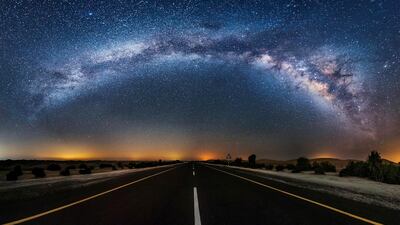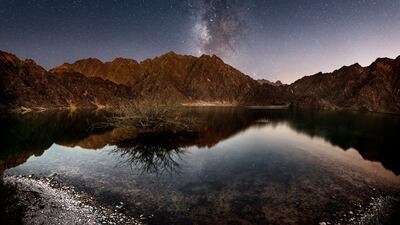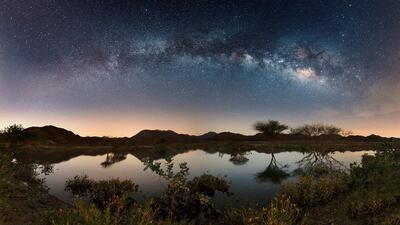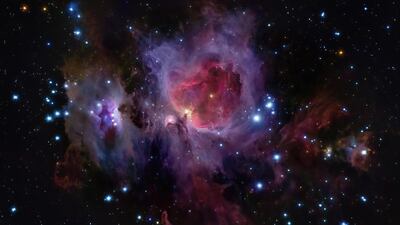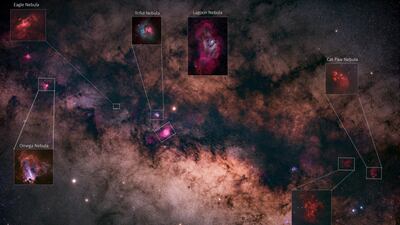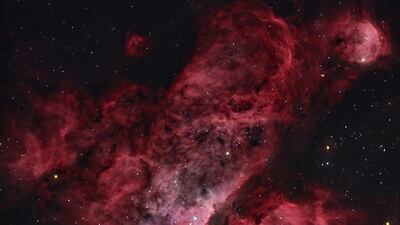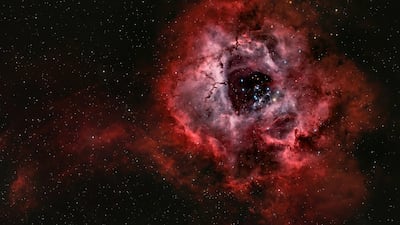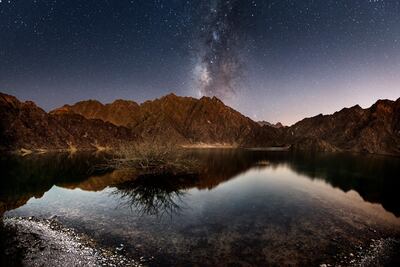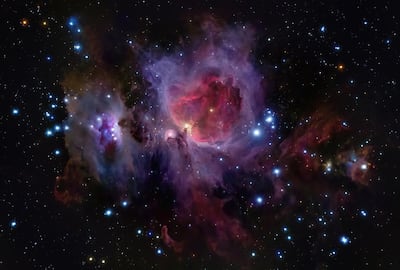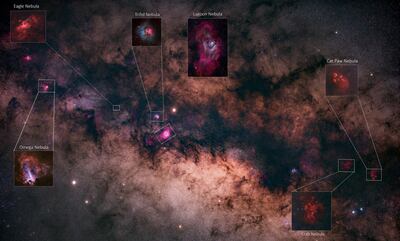Look up at the night sky and – if you’re in any major city, including in the UAE – chances are you won’t see much.
Light pollution has severely dampened the overhead scene, leaving little besides a few stranded stars and what looks like a celestial body or two that, on closer examination, reveal themselves to be nothing more than passing planes.
As such, it is easy to come to the conclusion that the sky above is an unexciting, lustreless expanse. But that’s far from the truth and one astrophotographer is out to reveal just how starry the UAE’s nights can be.
Through his work, Egyptian-Syrian artist Samy Olabi highlights the overlooked natural wonders of the country, showing that there's more to the UAE besides its luminous cityscapes and sandy deserts. His photo series, Heavens and Earth, captures rocky mountainsides canopied by star-spotted skies, bodies of water reflecting the arc of the Milky Way, and lone trees flanked by deep purple nebulae.
"It began in 2012 as a way to escape the daily stresses of my day-to-day job in construction and project management," Olabi says of the project, which was featured in the 2021 Xposure International Photography Festival that took place in Sharjah this month. The astrophotographer takes weekly excursions out of Dubai, where he lives, and into the deserts or mountains, trying to identify the best places from which to photograph the night sky.
Over time, Olabi’s photography skills, as well as his instinct for recognising a good vantage point, have developed. “Nobody taught me directly,” he says. “I didn’t take any courses. It was just through practice. Also, the internet is a major source of inspiration and knowledge.”

Location is vital, he says. “It should be away from street lights and buildings. In fact, you should be at least 100 kilometres from cities.
"Another important factor is the weather You have to study the weather forecast from a professional perspective. So it's not just about looking at a mobile app. You have to study humidity and dust levels. You have to take into consideration whether there's a high cloud or low cloud."
The phases of the Moon also play a vital role in determining the quality of a photograph, with darker nights usually providing more ideal conditions for astrophotography. "The perfect chance to shoot a good picture comes around the new moon phase," he explains. "So a few days before or after the new moon."
With there being so many obstacles to star visibility, Olabi says he tries to make the most of the few trips he takes every month. For instance, instead of relying on a single camera, Olabi has devised a set-up whereby he can have three cameras taking photos at the same time, so that by the end of the night he has thrice the amount of material to work with.
"With this set-up, I can take time-lapse videos, I can take behind-the-scenes footage and I can shoot the sky," he says. "My car is practically a camp and an observatory."
Even after he returns home, Olabi works hard on producing the perfect final images. The post-processing aspect is an integral but sensitive phase of astrophotography, he says. Too much can result in aninauthentic photograph, while too little can leave it looking a bit dull.
“In astrophotography, you have to keep taking lots and lots of images for just one photograph. The aim is to get as much detail as possible. So this will require a lot of stacking. Any picture you see is a stacking of a hundred images taken over multiple nights. Still, even with post-processing, you have to maintain the image as is. Some people over-process, taking the easiest path. That’s why sometimes you see shiny astrophotography on Instagram that seems more like a dream than a real photograph.”
Olabi has achieved success with his methods over the past decade, having worked with brands such as Nikon, CNN and BBC. His photographs were also used as background images on Apple and Microsoft operating systems. Yet the astrophotographer says he didn't want to limit the scope of his work by only publishing them in magazines and on social media. Ultimately, he saw the potential for Heavens and Earth to be used as an educational resource for those who wanted to get closer to the starlit heavens.
So, in 2018, he began developing an approach to enhance how his works are interacted with. He started taking wide panorama shots with the intent of developing 360° images and videos, which could be viewed through virtual reality headsets. The installation was featured during Olabi's exhibition at the Xposure International Photography Festival.
“I got more fascinated with the project after the coronavirus pandemic hit,” he says. “I started seeing people longing to come out of the lockdown and seeing things they no longer had access to.”
The project, Olabi says, inspired him to leave his job in the construction sector to pursue a full-time career as an astrophotographer. He even started his own company, Olabi Photography and Media Solutions, which focuses on bringing the art form to virtual reality.
The company’s website aims to bring three-dimensional interactivity to a desktop computer or smartphone, where, without having to use a VR headset, users can flick through the UAE’s night skies or navigate them using a mouse. “Basically the website is like you’re stepping into a portal and from there you can choose what area of the UAE you want to visit, and once there, you’ll see a sky fully mapped and labelled. It’s like visiting a planetarium.”
Next, Olabi says he wants to create a more immersive experience to allow people to be fully enveloped by his astrophotography. "I want to have a large 360° hall, where people can set into and be surrounded by the works without the need for a VR headset." His projects, he says, have the potential to be used in a number of research settings.
“I am already approaching cultural, governmental entities that could help put the work in its proper perspective I’m looking for organisations to collaborate with and help me make this into a bigger project.”
More information and images are available at www.heavensearth.ae
